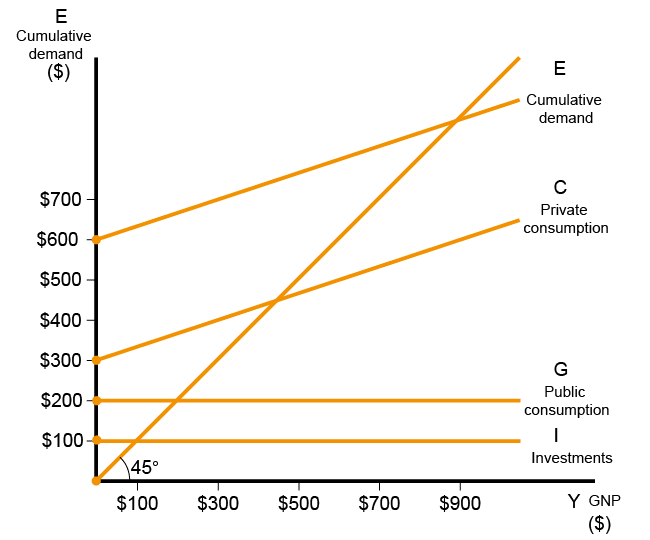The Keynes diagram includes the five curves that are presented in the diagram. These are as follows:
-
Total private consumption curve – C.
-
Total public consumption curve – G.
-
Total investment curve – I.
-
Aggregate demand curve E (= C + G + I).
-
Diagonal (a line at a 45-degree angle).
Diagram 11.10
Keynes’s Diagram – includes five curves

Equilibrium Point (Between Demand and Supply)
The point at which the aggregate demand curve (E) intersects the diagonal line is the equilibrium point between aggregate demand and GDP – in other words, the point at which aggregate demand equals GDP.
At every other point on the aggregate demand curve (E) there is a gap between GDP and aggregate demand.
-
To the left of the equilibrium point, aggregate demand is greater than GDP.
-
To the right of the equilibrium point, aggregate demand is less than GDP.


